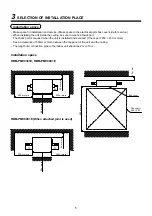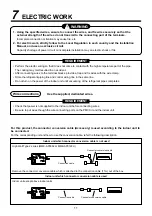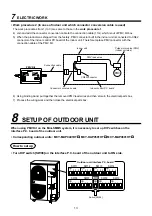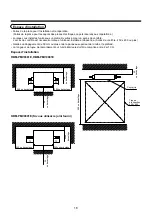
8
Pipe forming/End positioning
Flaring
1. Cut the pipe with a pipe cutter.
* In case of flaring for R410A with the conventional
flare tool, pull it out approx. 0.5mm more than that
for R22 to adjust to the specified flare size.
The copper pipe gauge is useful for adjusting
projection margin size.
Projection margin in flaring:
B (Unit: mm)
Rigid (Clutch type)
Imperial (Wing nut type)
Connection of refrigerant pipe
Connect all the refrigerant pipes with flare connecting
work.
• Since the atmospheric pressure only is sealed as the
sealing gas, it is not abnormal that “Pushu…” sound
is not heard when the flare nut is removed.
• Be sure use a double spanner for pipe connecting
work of the indoor unit.
• Refer to the following table for tightening torque.
REQUIREMENT
If an excessive torque is applied, the nut may
crack depending on the installation conditions.
Outer diam. of copper pipe
6.4
9.5
A
R410A
9.1
13.2
+0
- 0.4
Outer diam. of
copper pipe
6.4
9.5
R410A tool used
R410A
0 to 0.5
0 to 0.5
Conventional tool used
R410A
1.0 to 1.5
1.0 to 1.5
Outer diam. of copper pipe
6.4
9.5
R410A
1.5 to 2.0
1.5 to 2.0
Connecting pipe
outer diam. (mm)
Ø6.4
Ø9.5
Tightening
torque (N•m)
14 to 18
(1.4 to 1.8 kgf•m)
33 to 42
(3.3 to 4.2 kgf•m)
Re-tightening
torque (N•m)
18 (5.0 kgf•m)
42 (4.2 kgf•m)
2. Insert a flare nut into pipe, and flare the pipe.
As the flaring sizes of R410A differ from those of
refrigerant R22, the flare tools newly manufactured
for R410A are recommended.
However, the conventional tools can be used by
adjusting projection margin of copper pipe.
Flaring diam. Meter size:
A (Unit: mm)
A
B
Work using double spanner
90˚
Obliquity
Roughness
Warp
NO GOOD
OK












































